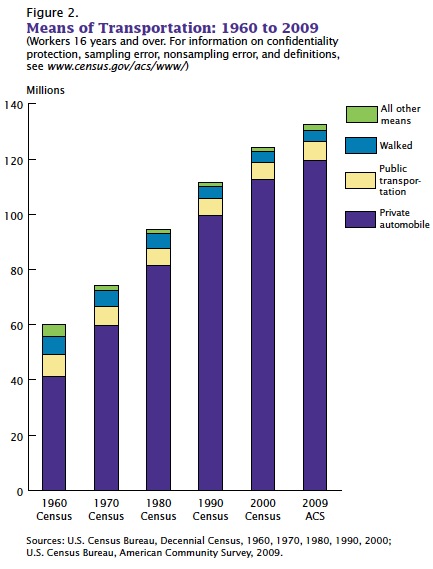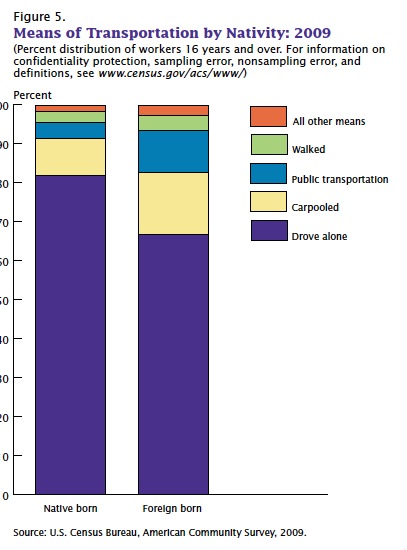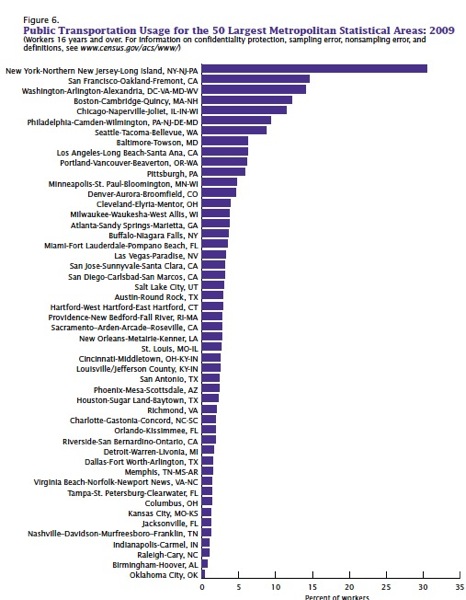Transit advocates should thank gridlock the transport bill from the House is more symbolic than anything. It’s not going to go anywhere, not because the bill has no supporters, but because nothing is going anywhere in DC these days.
The bill a does a bunch of really unfortunate things, but the one that has the average urbanist’s undies in a twist is that the bill cuts transit, walking, biking projects off from the Highway Trust Fund, to fend for themselves in the general budgetary process at the federal level.
The whinge from the urban blogosphere is already deafening, however. HOW DARE those mean House Republicans hate wonderful transit? What’s wrong with them? They must represent suburbs.
What House Republicans are disputing in this Bill isn’t whether cities should have adorable little trolley trains and wonderful bikes lanes and capacious sidewalks. What they dispute: that the feds, and not cities themselves, should pay for them.
You know the transit fanboys around the blogosphere are writing the outraged posts now full of Richard Florida factoids about about how important cities are to America, and how cities generate 86 percent of economic value in the US, and how most Americans (80 percent) live in cities and how all that means Federal transport policy should be federal transit policy. We’re important, in sum!
However, anti-federalists see those exact same factoids as reasons that cities can afford to build their own damn transit.
But, but, but! Transit revitalizes local business and increases property values!
Then local businesses and land owners can pay for it with all the new value they get. Why should they get windfalls from federal sources?
But but but controls on local property taxes don’t allow that.
Then why should federal taxpayers pay to provide something that the locals who benefit from it most don’t want to pay for themselves?
But, but, but! Transit clears the air, helps clear up traffic congestion, and prevents climate change!
If urban drivers are causing congestion and polluting urban air, how does taxing rural drivers and taking their money for urban projects make sense? If California has a problem with too much driving, nothing keeps you from raising the state gas tax. Tax your own drivers and build your own transit.
And the circular argument goes on and on. Disagreement about whether the federal government has a role to play, and what that role should be, in the provision of urban goods can’t be reconciled with assertions about how great particular urban goods are.
LaHood hasn’t helped matters. LaHood hasn’t really understood the role he was chosen for; he seems to assume he is still running for office, and his typical MO is to play to his urban choir with blather like livability rather than go out of his way to help those not in his choir understand why projects for motorists should get the ax when motorists’ tax dollars keep the HTF afloat. His predecessors were able to progressively open the Fund to redistribution from motorists to other modes largely by doing the opposite of what he’s done: by not drawing attention to themselves or to their agendas.
I’ve always though the Secretary of Transportation should ideally be a rather boring job. But LaHood is a politician, not an agency guy, and he’s over-politicized his job by screaming as loudly as he can and stomping his way into the spotlight as often as he can, both around transit and high speed rail. In so doing, he’s thrown his agency into the tsunami of the deepest political divides in Washington.
In fairness, this bill has been a long time simmering. Republicans have never loved paying for transit out of the HTF, but LaHood’s bombastic, self-promotional, New Sheriff In Town style has thrown gasoline on the low simmering fire.


